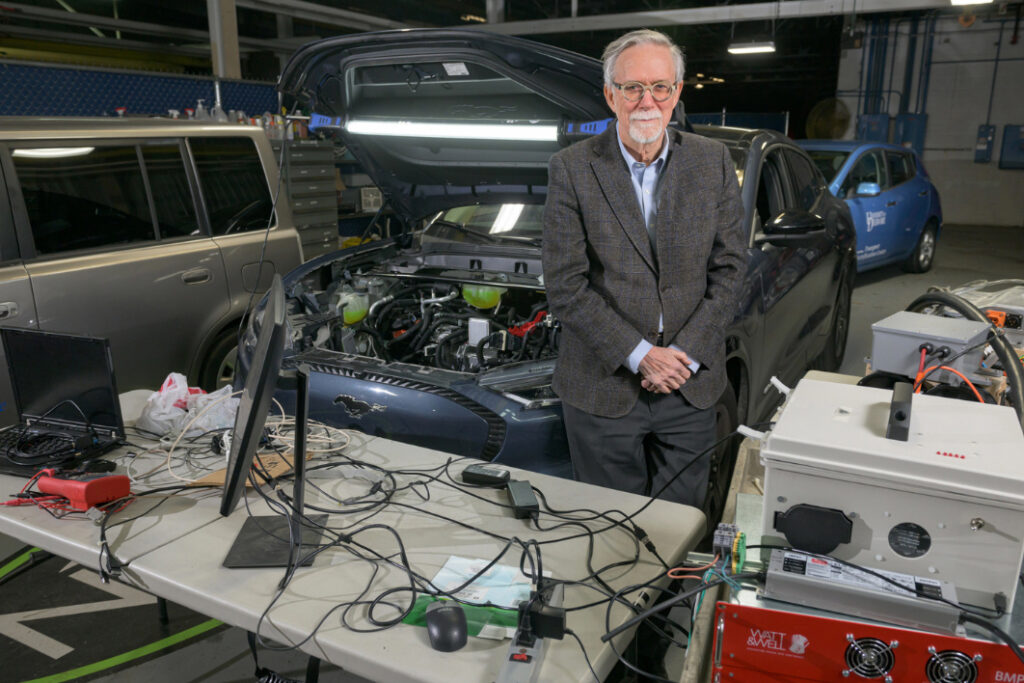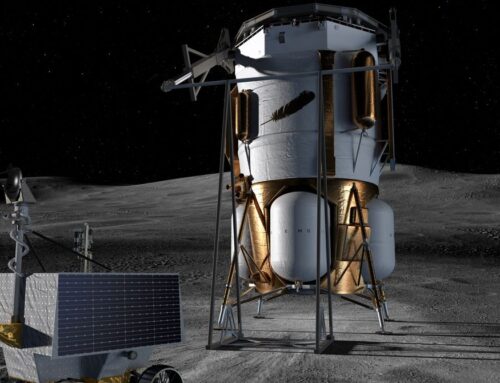Vehicle-to-Grid Power Is Becoming a Reality, But Why Isn’t Progress Faster?
October 2, 2025
A Maryland utility is touting a project that allows owners of Ford F-150 Lightning electric pickups to send power from their vehicles to the grid and get compensated for it.
The Baltimore Gas and Electric Co. project is a partnership with Ford, the automaker, and Sunrun, a solar and energy services company. It’s the kind of thing that, if deployed on a large scale, could be transformative for the grid.
But the nagging sense I get when reading about vehicle-to-grid pilot projects is that this is an opportunity that remains largely untapped. The Maryland project, for example, involves just three trucks.
Electric vehicles use the large majority of the lithium-ion batteries being produced in today’s market. When those EV batteries are sitting in garages and connected to chargers, they become a potentially vast resource that can be utilized by the grid, generating income for the vehicles’ owners. But to realize this opportunity, utilities, automakers and regulators need to move beyond pilot projects.
Get Inside Clean Energy
Today’s Climate
Tuesdays
A once-a-week digest of the most pressing climate-related news, written by Kiley Price and released every Tuesday.
Get Today’s Climate
Breaking News
Don’t miss a beat. Get a daily email of our original, groundbreaking stories written by our national network of award-winning reporters.
Get Breaking News
ICN Sunday Morning
Go behind the scenes with executive editor Vernon Loeb and ICN reporters as they discuss one of the week’s top stories.
Get ICN Sunday Morning
Justice & Health
A digest of stories on the inequalities that worsen the impacts of climate change on vulnerable communities.
Get Justice & Health
Also, the market share for EVs needs to continue to grow, and the Trump administration’s cancellation of the tax credit of up to $7,500 for buying a new EV is a setback. The tax credit ended this week, and analysts expect it will lead to a decrease in EV sales at least in the short term.
I spoke with Willett Kempton, a University of Delaware professor who first wrote about the potential of vehicle-to-grid power in 1997. That paper, co-authored with Steven E. Letendre, who was then at Green Mountain College in Vermont, had a central idea that seemed almost like science fiction at the time, when EVs barely existed. The paper’s title sums it up: “Electric vehicles as a new power source for electric utilities.”
One of its key points was that the technology for using EVs to power the grid was pretty simple. Consumers would need to have bi-directional chargers, capable of sending electricity from the grid to the battery, and from the battery to the grid. And grid managers would need software to control the flow of electricity to the grid.
Kempton found that groups of EVs could send power to the grid and receive compensation that would help to offset the costs of owning the vehicle. There would be almost no negative effect on battery life or the vehicle’s readiness for use.
“The economics are really compelling,” he said.

Here’s some of the math he found exciting: If the United States could get to the point that one-fourth of its vehicles were EVs with bi-directional chargers, they would provide the grid with access to 660 gigawatts of capacity. That figure, from a 2005 paper he co-authored, was close to the total capacity of all U.S. power plants at that time. Since then, other researchers have conducted their own versions of this calculation using more recent variables, underscoring the vast potential.
The main stumbling block turned out to be the reluctance of various stakeholders to agree on technical standards so that they would all be speaking the equivalent of the same language regarding how the system controls would work.
Only recently, decades after that 1997 paper, have most companies involved in vehicle-to-grid technology adopted a common set of charging standards. Now that the standards are in place, automakers and utilities have a much easier time setting up vehicle-to-grid programs than they would have before.
Progress is now happening with the development of laws and rules in the states and with pilot projects by companies such as Nuvve of San Diego, a leading player in vehicle-to-grid technology.
Nuvve’s U.S. projects include managing power from a fleet of electric buses in the Cajon Valley Union School District in the San Diego area.
At least eight states have recently enacted or introduced legislation or regulatory actions to foster vehicle-to-grid technology, according to the NC Clean Energy Technology Center. They are: California, Connecticut, Georgia, Illinois, Indiana, Maryland, Massachusetts and New Jersey.
Delaware has been at the forefront, including the work of Kempton and his colleagues at the University of Delaware. Researchers there, sometimes in partnership with the utility Delmarva Power, have used vehicles from Nissan, BMW and other makers as part of various pilot projects.
One recurring theme across the states is that electric buses and fleet vehicles are a common early step for vehicle-to-grid technology because the batteries are large and they are often parked in a central location, making them easier to manage.
What I don’t see anywhere are projects with hundreds or thousands of residential EVs. In this way, vehicle-to-grid initiatives are not as far along as some of the efforts involving home battery systems used in virtual power plants, which are groups of batteries that work together to function like a power plant. Sunrun is a key player in virtual power plants and it has several vehicle-to-grid projects, including the one in Maryland.
Sunrun describes the Maryland initiative as the first in the country to use residential vehicles, as opposed to commercial or fleet vehicles. Last week, it announced that the vehicles had successfully sent power to the grid, after about a year of setting up systems to allow this to happen.
“In addition to showing how electric vehicles can power homes, add electrons to the grid, and help utilities meet peak electricity demand, this program also creates extra income opportunities for customers,” said Sunrun CEO Mary Powell in a statement.
Beginning in July, the utility had the ability to use power from the trucks during the peak demand hours of 5 p.m. to 9 p.m. on weekdays. The vehicles’ owners get paid based on the amount of electricity they share, which caps at $1,000 for a period that ran from July to September, Sunrun said.
Sunrun has been working with Ford to develop programs such as the one in Baltimore. The long-term goal is to make it commonplace for an EV owner to be able to use their vehicle’s battery for backup power at home or as an income source by selling power to the grid.
This story is funded by readers like you.
Our nonprofit newsroom provides award-winning climate coverage free of charge and advertising. We rely on donations from readers like you to keep going. Please donate now to support our work.
Some of the most significant developments in vehicle-to-grid technology are happening in Europe. BMW announced a program last month in Germany where consumers could receive essentially free charging at home in exchange for allowing their battery to provide power to the grid when it’s connected to a charger.
In 1997, Kempton expected that this technology would be much further along than it is today.
“I thought the world was going to beat a path,” he said.
But he is optimistic that today’s pilot projects indicate a market on the cusp of something big. He notes that most of the new EVs coming onto the market have built-in capability for bi-directional charging, and many utilities are in some phase of integrating this into their grid management.
So, let’s see a utility do a vehicle-to-grid project with hundreds or even thousands of vehicles. And let’s see it soon.
Other stories about the energy transition to take note of this week:
The Consumer Credit for EVs Has Ended. What’s Next? The tax credit of up to $7,500 for buying or leasing an electric vehicle is no longer available after the clock turned to midnight on Oct. 1, the result of the Trump administration’s One Big Beautiful Bill Act. Ford CEO Jim Farley said he thinks the sudden end of the credit could lead to a substantial contraction of the market, with EVs falling to as little as 5 percent of all new vehicles sold, about half as much as before, as Michael Wayland reports for CNBC. While it’s not much of a silver lining, the financing affiliates of Ford and General Motors have undertaken financial maneuvers that will allow those automakers to continue offering the $7,500 credit for leased vehicles at least until their current inventory is sold, as Mike Colias reports for Reuters. Analysts expect EV sales to plummet for the rest of 2025 as prospective buyers raced to make purchases before the end of the credit. What’s much less clear is what may be ahead in 2026 and beyond as automakers continue to introduce new EVs and the rest of the world is making a rapid shift to this technology.
States Are Key Battleground Now on Wind and Solar Permits: A new report tracks how states are taking a variety of approaches to issuing permits for new wind and solar projects, with some states adding restrictions and others reducing limits. According to the think tank Clean Tomorrow, 148 bills were introduced in the first half of this year that would make permitting more restrictive, while 89 bills were introduced that have a neutral effect and 68 would make it easier to get permits, as my colleague Aidan Hughes reports for ICN.
Solar Led the EU in Electricity Generation in June: Solar was the leading source of power in the European Union in June, generating 22 percent of the bloc’s electricity, which was slightly ahead of nuclear, as Pilar Sánchez Molina reports for PV Magazine. For the second quarter, renewable sources accounted for 54 percent of total electricity, up from 52.7 percent in the same period in the prior year. Denmark was the EU’s renewable energy leader, with 94.7 percent.
Inside Clean Energy is ICN’s weekly bulletin of news and analysis about the energy transition. Send news tips and questions to [email protected].
About This Story
Perhaps you noticed: This story, like all the news we publish, is free to read. That’s because Inside Climate News is a 501c3 nonprofit organization. We do not charge a subscription fee, lock our news behind a paywall, or clutter our website with ads. We make our news on climate and the environment freely available to you and anyone who wants it.
That’s not all. We also share our news for free with scores of other media organizations around the country. Many of them can’t afford to do environmental journalism of their own. We’ve built bureaus from coast to coast to report local stories, collaborate with local newsrooms and co-publish articles so that this vital work is shared as widely as possible.
Two of us launched ICN in 2007. Six years later we earned a Pulitzer Prize for National Reporting, and now we run the oldest and largest dedicated climate newsroom in the nation. We tell the story in all its complexity. We hold polluters accountable. We expose environmental injustice. We debunk misinformation. We scrutinize solutions and inspire action.
Donations from readers like you fund every aspect of what we do. If you don’t already, will you support our ongoing work, our reporting on the biggest crisis facing our planet, and help us reach even more readers in more places?
Please take a moment to make a tax-deductible donation. Every one of them makes a difference.
Thank you,
Search
RECENT PRESS RELEASES
Related Post





